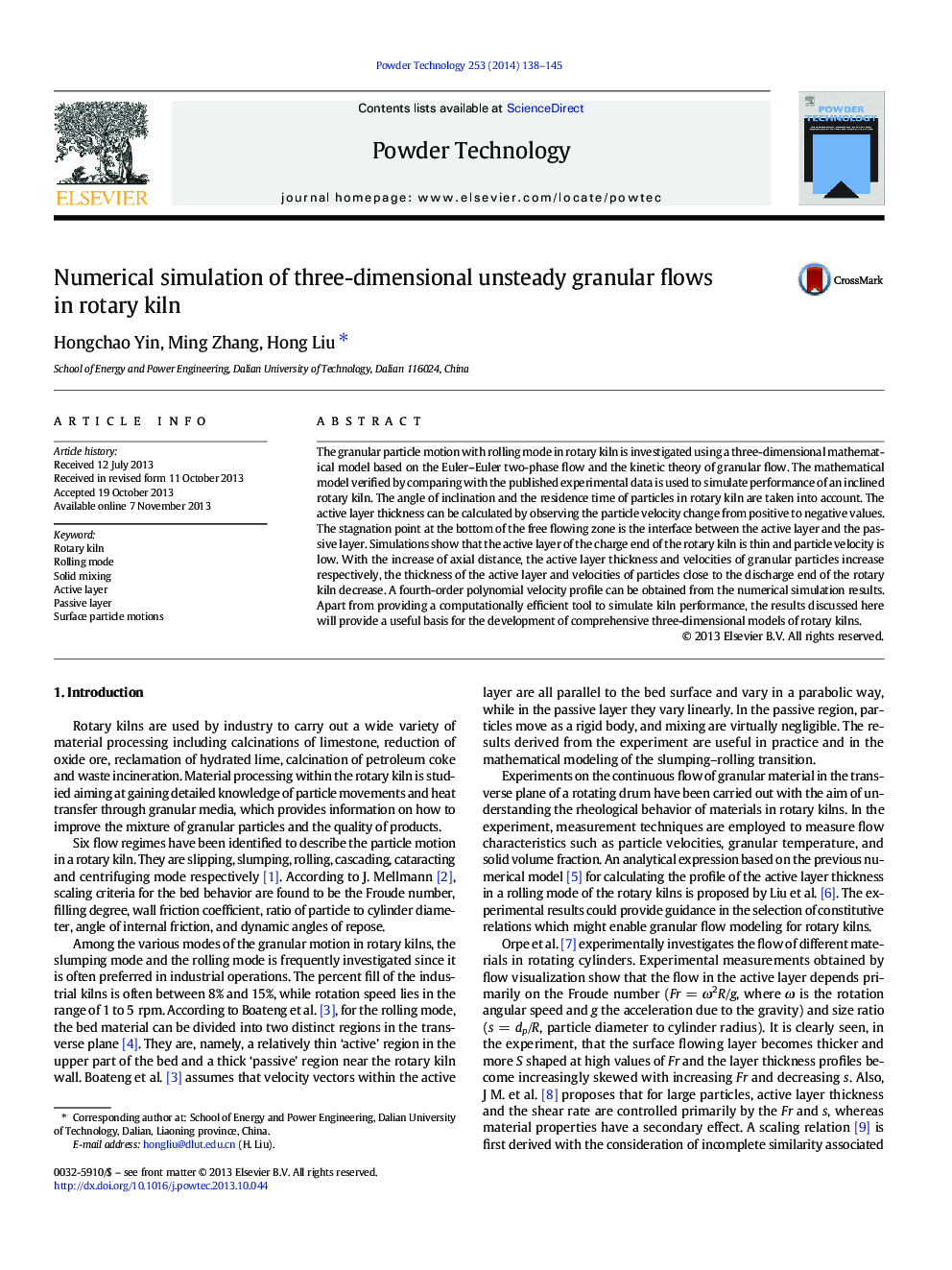| کد مقاله | کد نشریه | سال انتشار | مقاله انگلیسی | نسخه تمام متن |
|---|---|---|---|---|
| 236441 | 465672 | 2014 | 8 صفحه PDF | دانلود رایگان |
• The granular particle motion using a three-dimensional model is investigated.
• Euler–Euler two-phase flow is coupled with the kinetic theory of granular flow.
• The active layer of the charge end of kiln is thin and particle velocity is low.
• The active layer thickness increases with increasing of axial distance.
• The active layer thickness decreases again at the discharge end of the kiln.
The granular particle motion with rolling mode in rotary kiln is investigated using a three-dimensional mathematical model based on the Euler–Euler two-phase flow and the kinetic theory of granular flow. The mathematical model verified by comparing with the published experimental data is used to simulate performance of an inclined rotary kiln. The angle of inclination and the residence time of particles in rotary kiln are taken into account. The active layer thickness can be calculated by observing the particle velocity change from positive to negative values. The stagnation point at the bottom of the free flowing zone is the interface between the active layer and the passive layer. Simulations show that the active layer of the charge end of the rotary kiln is thin and particle velocity is low. With the increase of axial distance, the active layer thickness and velocities of granular particles increase respectively, the thickness of the active layer and velocities of particles close to the discharge end of the rotary kiln decrease. A fourth-order polynomial velocity profile can be obtained from the numerical simulation results. Apart from providing a computationally efficient tool to simulate kiln performance, the results discussed here will provide a useful basis for the development of comprehensive three-dimensional models of rotary kilns.
The active layer of the charge end of the rotary kiln is thin and particle velocity is low. With the increase of axial distance, the size of the active layer thickness and granular particle velocities increase respectively. However, the thickness of the active layer and velocities close to the discharge end of the rotary kiln decrease.Figure optionsDownload as PowerPoint slide
Journal: Powder Technology - Volume 253, February 2014, Pages 138–145
